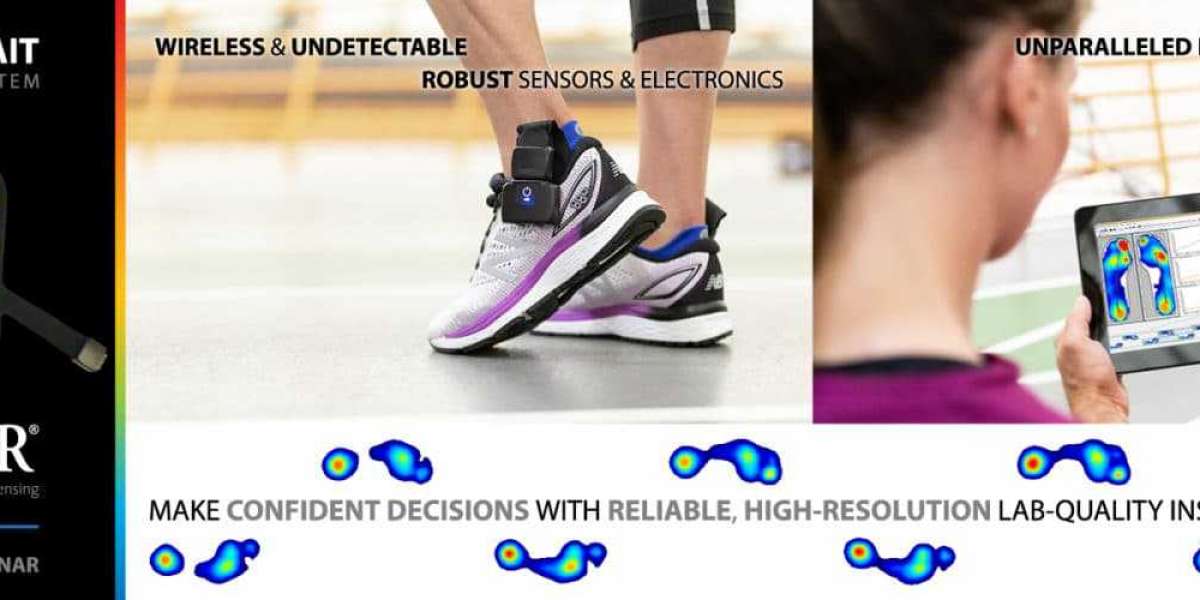Foot health is a crucial aspect of overall well-being, yet it is often overlooked until problems arise. Many individuals suffer from foot-related issues that can stem from various factors, including improper footwear, medical conditions, or lifestyle choices. Recent advancements in technology have led to the development of plantar pressure sensors, which offer a promising solution for monitoring and improving foot health. This article delves into the role of plantar pressure sensors in enhancing foot health, discussing their benefits, applications, and significance in both clinical and everyday settings.
Understanding Plantar Pressure Sensors
Plantar pressure sensors are devices designed to measure and analyze the pressure distribution on the sole of the foot. They typically consist of a flexible mat embedded with multiple sensors that detect pressure changes as a person stands, walks, or runs. These sensors collect data that can be used to assess foot function, identify abnormalities, and guide treatment options.
How Plantar Pressure Sensors Work
The operation of plantar pressure sensors is relatively straightforward. When a person steps on the sensor mat, the sensors detect the pressure exerted on different areas of the foot. This data is then transmitted to a computer or mobile device for analysis. The resulting information can be visualized in various formats, including heat maps and pressure distribution graphs, which provide insights into foot mechanics and gait patterns.
The Importance of Monitoring Foot Pressure
Monitoring foot pressure is essential for several reasons, particularly for individuals with specific health conditions. High-pressure areas on the foot can lead to discomfort, pain, and even serious complications if not addressed. For example, individuals with diabetes are at risk for foot ulcers due to poor circulation and neuropathy, making regular monitoring crucial. By utilizing plantar pressure sensors, healthcare professionals can identify high-pressure zones and intervene early to prevent complications.
Benefits of Plantar Pressure Sensors
1. Early Detection of Foot Problems
One of the most significant advantages of plantar pressure sensors is their ability to detect foot problems early on. By analyzing pressure distribution patterns, healthcare providers can identify abnormalities such as excessive pressure in certain areas, which may indicate the onset of conditions like plantar fasciitis, metatarsalgia, or diabetic foot ulcers. Early detection allows for timely intervention, reducing the risk of more severe complications.
2. Personalized Treatment Plans
Plantar pressure sensors provide detailed data that enables healthcare professionals to develop personalized treatment plans for patients. By understanding a patient's specific pressure distribution and gait mechanics, practitioners can recommend tailored interventions, such as custom orthotics or targeted exercises. This personalized approach enhances the effectiveness of treatment and improves patient outcomes.
3. Enhanced Rehabilitation
For individuals recovering from foot injuries or surgeries, plantar pressure sensors can play a crucial role in rehabilitation. By monitoring pressure distribution throughout the healing process, healthcare providers can assess the effectiveness of rehabilitation protocols and make necessary adjustments. This data-driven approach can accelerate recovery and improve the overall effectiveness of rehabilitation programs.
4. Improved Athletic Performance
Athletes can also benefit from plantar pressure sensors. By analyzing foot pressure during activities such as running, jumping, or cutting, trainers and sports scientists can identify areas for improvement in technique and biomechanics. This information can lead to enhanced performance and reduced risk of injury, as athletes can make informed adjustments to their training regimens.
5. Better Footwear Choices
Finding the right footwear can be challenging, especially for individuals with specific foot conditions. Plantar pressure sensors can assist in selecting appropriate shoes by analyzing how different footwear affects pressure distribution. This information can guide individuals in making informed decisions about the best shoes for their needs, ultimately promoting better foot health.
6. Data-Driven Insights for Research
Plantar pressure sensors are valuable tools for researchers studying foot health and biomechanics. The data collected from these sensors can contribute to a deeper understanding of various foot conditions, gait mechanics, and the impact of footwear on foot health. This research can lead to new treatment approaches and innovations in foot care.
7. Increased Awareness and Education
The use of plantar pressure sensors can increase awareness about foot health among both healthcare providers and patients. By visualizing pressure data, individuals can better understand the importance of foot mechanics and the impact of their lifestyle choices on foot health. This increased awareness can lead to proactive measures, such as regular foot assessments and healthier habits.
Applications of Plantar Pressure Sensors
1. Clinical Settings
In clinical settings, plantar pressure sensors are often used for diagnostic and therapeutic purposes. They can assist podiatrists, orthopedic specialists, and physical therapists in evaluating foot health and developing treatment plans. The sensors can also be used in pre- and post-operative assessments to monitor recovery.
2. Sports Medicine
Athletic trainers and sports medicine professionals utilize plantar pressure sensors to assess athletes' biomechanics and develop training programs tailored to individual needs. By analyzing pressure distribution during sports activities, they can identify potential injury risks and optimize performance.
3. Research and Development
In research environments, plantar pressure sensors are used to study foot mechanics, gait analysis, and the effects of various interventions. This research contributes to the development of new treatments, footwear designs, and rehabilitation protocols.
4. Home Use
With advancements in technology, plantar pressure sensors are becoming more accessible for home use. Individuals can utilize portable sensor mats to monitor their foot health regularly. This accessibility empowers individuals to take charge of their foot health and seek help when necessary.
The Future of Plantar Pressure Sensors
As technology continues to evolve, the future of plantar pressure sensors looks promising. Innovations such as miniaturization, wireless connectivity, and integration with smartphone apps are making these devices more user-friendly and accessible. This evolution will likely lead to increased adoption among healthcare providers and individuals, further enhancing foot health management.
Conclusion
Plantar pressure sensors represent a significant advancement in the field of foot health. By providing valuable insights into pressure distribution and foot mechanics, these devices play a crucial role in early detection, personalized treatment, and improved rehabilitation outcomes. As awareness of foot health continues to grow, the integration of plantar pressure sensors into both clinical and everyday settings will become increasingly important.
For anyone interested in exploring the benefits of plantar pressure sensors further, Ler Magazine is your go-to resource. Discover more about how these innovative technologies can transform your understanding of foot health and empower you to take proactive steps toward a healthier future. Don’t wait—start your journey to better foot health today!







